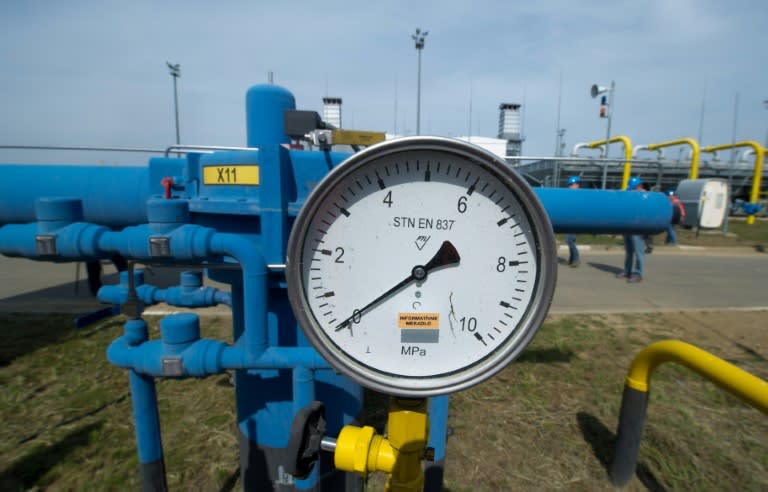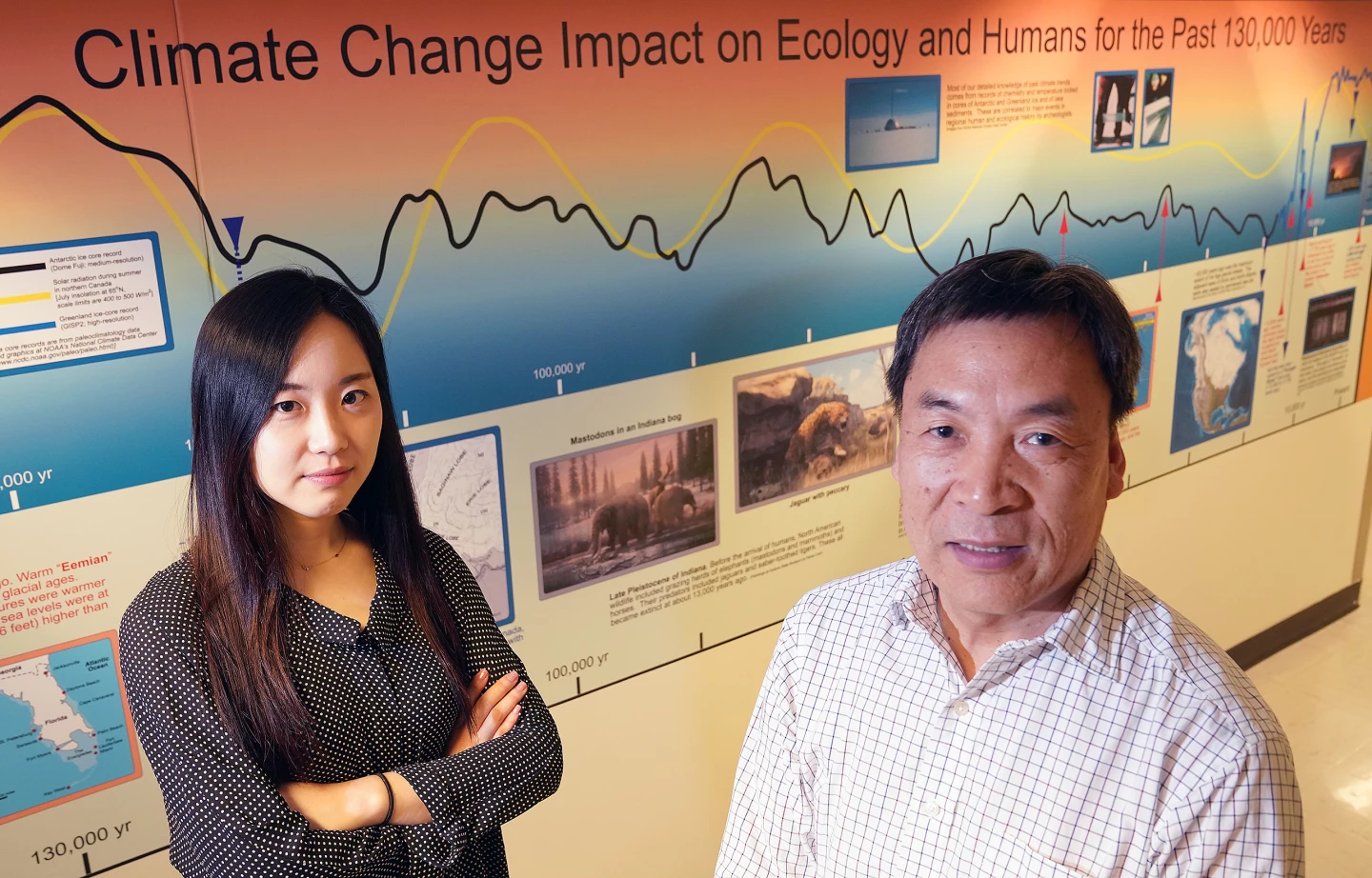Thursday April 9th… Dear Diary. The main purpose of this ongoing blog will be to track United States extreme or record temperatures related to climate change. Any reports I see of ETs will be listed below the main topic of the day. I’ll refer to extreme or record temperatures as ETs (not extraterrestrials).😉
Main Topic: Sone current Methane news
Dear Diary. One of my favorite people to deal with on the climate crisis is Professor Peter Strachan, who resides in Scotland. I was shocked to see this note yesterday:
Please click on this tweet to read the entire article. Professor Strachan’s note reminds me that the fracking industry is releasing much more natural gas this century, helping to spike methane levels across the planet. As we know methane is a far more potent greenhouse gas than carbon dioxide by more than a factor of twenty-five. Here is some of the latest unfortunate findings on methane:
Methane Emissions Hit a New Record and Scientists Can’t Say Why
Eric Roston and Naureen Malik 2 days ago
(Bloomberg) — Airborne methane levels rose markedly last year, according to a preliminary estimate published today by the U.S. National Oceanic and Atmospheric Administration. The results show a dramatic leap in concentration of the second most-powerful greenhouse gas, which is emitted from both industrial and natural sources.
“Last year’s jump in methane is one of the biggest we’ve seen over the past twenty years,” said Rob Jackson, professor of Earth system science at Stanford University and chair of the Global Carbon Project. “It’s too early to say why, but increases from both agriculture and natural gas use are likely. Natural gas consumption surged more than two percent last year.”
Methane levels have accelerated twice in the last 15 years, first in 2007 and again in 2014. Scientists have yet to pinpoint the exact cause (or causes). Virtually every contributor to the global methane problem may play a role, from the oil-and-gas industry to human agriculture to wetlands changing with the climate.
Methane is about 25 times more powerful a heat-trapping gas than its nearest competitor—carbon dioxide—when extrapolated over the course of a century.
Oil and gas producers have long been criticized for tolerating methane leaks at gas well sites, pipelines, and compressor stations. A June 2018 study by the Environmental Defense Fund estimated that these leaks are equivalent to $2 billion in losses for the industry. The EDF did not take into account the gas producers purposely burn at at well sites to keep even more crude flowing, a practice that enrages environmental activists.
Some of the world’s biggest oil and gas producers have recently become more vocal about addressing leaks and setting climate goals. Last month Bernard Looney, the recently appointed chief executive officer of BP PLC, pledged to cut carbon dioxide emissions from the company’s own operations and production by 2050, the boldest plan yet from the fossil fuel industry.
Energy use and economic activity are tightly connected, which means that the halt in global production from the Covid-19 pandemic is likely to cause the highest drop-off in emissions seen in decades.
The recent collapse in crude prices may also lessen the need to flare gas, which was already on the decline in the Permian over the first three months of 2020, according to data released Monday by Rystad Energy AS.
For more articles like this, please visit us at bloomberg.com
I think we can also chalk up part of the reason due to increasing permafrost melt. Also:
https://news.yahoo.com/satellite-data-lays-scale-methane-leaks-bare-160111608.html
Satellite data lays scale of methane leaks bare

Patrick GALEY,AFP•April 1, 2020

Using imaging data gathered by the European Space Agency’s Sentinel 5-P monitoring mission, the study shows more than 100 “high-volume emission events” worldwide from gas storage and transmission facilities (AFP Photo/JOE KLAMAR)More
Paris (AFP) – Methane, a powerful greenhouse gas, is leaking from industry sites at rates equivalent to the annual carbon emissions of France and Germany combined, a new analysis using satellite data shows.
Using imaging data gathered by the European Space Agency’s Sentinel-5P monitoring mission, the study shows more than 100 “high-volume emission events” worldwide from gas storage and transmission facilities.
These events alone emitted around 20 million tonnes of methane — the short-term equivalent to releasing 1.8 billion tonnes of carbon pollution.
“The good news is most of these are man-made and can easily be addressed through action by individual companies, governments and regulators,” said Antoine Rostand, CEO of Kayrros, an asset observation platform that conducted the analysis.
The analysis showed methane plumes from just three oil and gas facilities in Algeria were emitting more than 25 tonnes of methane per hour — equivalent to the CO2 emissions from a 750 megawatt coal power plant.
While methane only stays in the atmosphere a fraction of the time that CO2 does, over a period of decades it is dozens of times more potent as a greenhouse gas.
Overall, greenhouse gas emissions from energy have risen globally nearly every year in the last decade, despite the 2015 Paris climate deal mandating their reduction.
The United Nations says that manmade emissions must decline 7.6 percent annually by 2030 to limit global warming to 1.5C above pre-industrial levels — the more ambitious cap laid out in the Paris deal.
Claus Zehner, Sentinel-5P mission manager at ESA, said satellite monitoring of methane leaks could help industry “support the reduction of global emissions and slow down climate change”.
The analysis has not been peer-reviewed but has been shared with the European Commission.
The International Energy Agency on Tuesday released its assessment of global methane emissions, which found that about 570 million tonnes are added to the atmosphere each year — around 60 percent of which comes from human activity.
“The ability to identify big leaks by satellite will not solve the challenge presented by methane emissions from oil and gas by itself,” the IEA said.
“Tackling them requires companies to pursue and maintain high operational standards, and policy makers to put in place well-designed regulations.”
Commenting on the Kayrros project, Gunnar Luderer and Nico Bauer, climate economists at the Potsdam Institute for Climate Impact Research, said that it may overestimate the warming impact of methane leaks.
“Still, however, the annual leakage of 20 Mt of methane from 100 point sources mostly in the energy industry is an astonishing loss that is worth further validation,” they told AFP.
They said that the leaks alone were worth nearly two thirds of all natural gas use in France every year, with an industry impact of roughly four billion euros ($4.4 billion).
“Economists would expect that such leakage would be avoided for pure cost reasons,” said Luderer and Bauer.
“In any case, regulatory intervention could lead to lower emissions with economic benefit.”
There might be some good news on the methane and climate front though, stemming from microbes:
https://newatlas.com/environment/soil-microbes-methane-release-thawing-permafrost/
Soil microbes may counter methane release from thawing permafrost
By Michael Irving March 30, 2020

The Arctic permafrost is melting, which will release extra methane and other greenhouse gasesJohn A. Kelley, USDA Natural Resources Conservation, CC BY 2.0 View 3 Images
Polar ice and glaciers aren’t the only things at risk of melting as a result of climate change. The Arctic permafrost is beginning to thaw as well, with scientists concerned that this will release huge amounts of greenhouse gases stored there. But now researchers at Purdue University have found that methane-munching microbes might counter some of that, resulting in far lower emissions than previously thought.
In extremely cold regions around Siberia and the Arctic, the ground can freeze solid, locking away vast stores of carbon, methane, plant matter and microbes. And of course, as that permafrost begins to thaw out, those things are released again.
These emissions are already being recorded, with methane detected bubbling out of the ground and the East Siberian Sea at high levels. It may not get as much attention as carbon dioxide, however, methane is even more potent as a greenhouse gas.
But according to the new Purdue study, we may be overestimating just how much methane will end up in the atmosphere. That’s because of an often overlooked factor – microbes. Specifically, a group of bacteria called methanotrophs, which consume methane.

Methanotrophs live in organic-rich wetland soil in the Arctic, although this environment gives off far more methane than the bugs can consume. But the researchers on the new study discovered brand new species of methanotroph in Arctic mineral uplands. These soils are drier and contain far less methane, so the new species absorbs the gas from the air.
“This group of bacteria utilizes atmospheric methane as an energy source,” says Qianlai Zhuang, co-author of the study. “The emissions from wetlands will potentially be quite large, but if you consider the uplands, then the area-aggregated net emissions will be much smaller than previously thought.”
Realizing that these microbes hadn’t been included in prior calculations, the researchers then added their methane consumption into a biogeochemical model. And sure enough, the methane emission projections dropped. Interestingly, the team says that this falls in line with observed trends of methane emissions, which hadn’t been as quick to increase as had been predicted.

That said, the researchers are careful not to let their work inspire complacency for climate change. After all, it’s still a serious problem, and this doesn’t account for emissions in other parts of the world. Plus, the team says things could change as the temperatures heat up.
“We do believe that Arctic methane emissions will increase by the end of this century as other studies have shown, but the net increase to the atmosphere will be much smaller once upland methanotrophs are taken into consideration,” says Youmi Oh, co-author of the study. “It was even possible in our simulation that net emissions decrease because high-affinity methanotrophs survive better than methanogens in response to warming.”
The research was published in the journal Nature Climate Change.
Source: Purdue University
This is just some of the latest news on methane or natural gas from early 2020. I’ll be posting more items on this harmful greenhouse gas with time.
Now, here are some of todays articles on the horrendous coronavirus pandemic:
Here is more climate and weather news from Thursday:
(As usual, this will be a fluid post in which more information gets added during the day as it crosses my radar, crediting all who have put it on-line. Items will be archived on this site for posterity. In most instances click on the pictures of each tweet to see each article.)
Here are some European ET’s. As noted here this would be a very warm week for Europe:
(If you like these posts and my work please contribute via the PayPal widget, which has recently been added to this site. Thanks in advance for any support.)
Guy Walton “The Climate Guy”